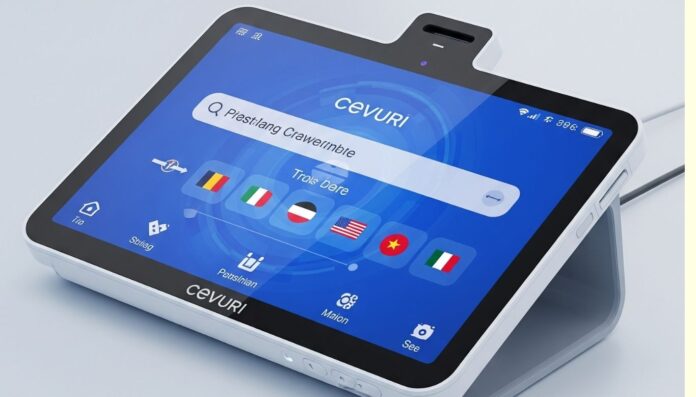The internet has a knack for creating linguistic puzzles. Just when you think you’ve seen every viral word, hashtag, and meme, something new emerges from the digital depths. Enter “Cevuri”—a term that’s been quietly circulating in online spaces, leaving many scratching their heads and wondering: what does it mean?
Unlike mainstream internet slang that explodes across social platforms, Cevuri operates in the shadows. It appears in forum discussions, buried deep in comment threads, and scattered across niche communities. Yet despite its elusive nature, this mysterious word is gaining traction among linguists, digital culture enthusiasts, and curious internet users who love solving puzzles.
This deep dive explores the fascinating world of Cevuri—from its potential origins to its evolving role in digital communication. We’ll uncover how a single word can embody the chaotic, creative nature of internet culture while challenging our understanding of how language evolves in the digital age.
The Turkish Connection: Tracing Cevuri’s Roots
The most compelling theory regarding Cevuri’s origin suggests that it originated in Turkey. Linguists studying the term have identified striking similarities to the Turkish word “çeviri,” which translates to “translation” in English. The resemblance isn’t coincidental—it suggests Cevuri may have emerged from a digital mistranslation or keyboard encoding error.
Turkish internet users frequently switch between Latin and Turkish characters when typing online. During this process, special characters like “ç” and “ı” can become corrupted, especially when content moves between different platforms or encoding systems. This technical glitch likely transformed “çeviri” into “Cevuri,” creating an accidental neologism.
The transformation from çeviri to Cevuri represents more than just a simple typo. It symbolizes the messy, imperfect nature of digital communication across languages and cultures. When words travel through the internet’s infrastructure—passing through different servers, platforms, and character encoding systems—they can emerge changed, creating new meanings in the process.
When Digital Glitches Become Cultural Phenomena
Cevuri has evolved far beyond its technical origins to become a symbol of digital confusion and multilingual communication breakdowns. Online communities have embraced the term as shorthand for those moments when technology fails to bridge language barriers perfectly.
The word now appears in contexts describing translation errors, cultural misunderstandings, and the general chaos of trying to communicate across digital platforms. Users employ Cevuri when automated translation tools produce confusing results, when meaning gets lost in cross-cultural exchanges, or when technical glitches create communication breakdowns.
This evolution demonstrates how internet users transform technological limitations into cultural touchstones. Rather than dismissing Cevuri as meaningless noise, digital communities have given it purpose and context. The word has become a meta-commentary on the challenges of global digital communication.
Social media platforms, with their emphasis on real-time, cross-cultural interaction, provide the perfect breeding ground for germs like Cevuri. Users encounter translation failures daily—from awkward Google Translate results to confusing automated captions—and Cevuri offers a concise way to acknowledge these digital miscommunications.
The Rise of Cevuri in Meme Culture
Meme culture thrives on the absurd, the cryptic, and the unexplained. Cevuri checks all these boxes, making it perfect meme material. Its foreign-sounding phonetics combined with its undefined nature create endless possibilities for humor and creativity.
Reddit threads have featured Cevuri as everything from a fictional app name to a mystical concept that explains internet chaos. One popular meme format presents Cevuri as the answer to life’s digital mysteries: “Feeling confused by conflicting online information? That’s just Cevuri at work.”
TikTok users have begun incorporating Cevuri into videos about translation fails and cultural confusion. The word serves as a punchline for content creators highlighting the absurdity of automated translation tools or cross-cultural misunderstandings on social platforms.
The meme potential lies in Cevuri’s flexibility. Since it lacks a fixed definition, content creators can adapt it to virtually any context involving confusion, miscommunication, or digital chaos. This adaptability ensures its continued relevance in fast-moving meme cycles.
Instagram stories and Twitter posts now feature Cevuri as a hashtag for content about language learning struggles, travel communication mishaps, and the general bewilderment of navigating multilingual internet spaces.
Breaking Down the Linguistics of Cevuri
From a phonetic perspective, Cевuрi presents interesting challenges. The pronunciation varies depending on the speaker’s linguistic background, but most settle on something resembling “CHEH-voo-ree” or “SEH-voo-ree.”
The word’s structure follows patterns familiar to Turkish speakers while remaining accessible to English speakers. This linguistic bridge makes Cevuri particularly effective as an internet term—it’s foreign enough to seem exotic but familiar enough to pronounce confidently.
Linguists studying internet language evolution find Cevuri fascinating because it demonstrates how digital platforms create new phonetic possibilities. The word exists primarily in written form online, allowing each reader to develop their own pronunciation. This flexibility contributes to its viral potential.
The spelling variations also contribute to Cevuri’s mystique. Some users write it as “Cevurı” (with the Turkish dotless i), others use “Cevuri,” and creative variations like “C3vur1” appear in gaming communities. Each spelling choice carries subtle cultural and contextual meanings.
Academic linguists have begun studying Cevuri as an example of how digital communication creates new words through technical accidents. The term appears in papers about internet linguistics, digital anthropology, and the evolution of global online culture.
Cevuri as a Digital Identity Marker
Beyond its use as a communication tool, Cevuri has become a subtle identity marker within certain online communities. Using the term correctly signals membership in digitally-savvy, linguistically aware groups that appreciate the absurdity of internet culture.
Gaming communities, particularly those involving international players, have adopted Cevuri to describe moments when language barriers create humorous misunderstandings during gameplay. The word provides a lighthearted way to acknowledge communication difficulties without assigning blame.
Tech forums use Cevuri when discussing localization problems, software translation errors, and the challenges of creating truly multilingual digital products. It’s become shorthand for the gap between technological ambition and linguistic reality.
Creative communities—artists, writers, and designers—employ Cevuri when describing the challenge of translating creative concepts across cultures. The word captures the frustration and humor inherent in trying to maintain artistic meaning through digital translation tools.
Language learning communities have embraced Cevuri as a term for those moments when direct translation fails to capture cultural nuance. It’s become a gentle way to acknowledge the limits of literal translation while celebrating the complexity of cross-cultural communication.
The Future of Accidental Internet Language
Cevuri represents a broader phenomenon in internet linguistics: the creation of meaning through digital accidents. As global internet usage grows and more languages interact online, we can expect more Cevuri-like terms to emerge.
Machine learning translation tools, while improving rapidly, still produce errors that create opportunities for new vocabulary. These “mistranslations” often capture something essential about the digital communication experience that perfectly translated words cannot express.
The democratization of content creation means more people are experimenting with language across cultural boundaries. This experimentation creates fertile ground for accidental neologisms like Cevuri to take root and flourish.
Social media platforms’ emphasis on brevity and immediacy favors terms that can quickly convey complex ideas about digital communication failures. Cevuri’s conciseness makes it ideal for tweet-length observations about internet culture.
As virtual reality and augmented reality technologies create new forms of cross-cultural interaction, terms like Cevuri may become even more relevant. These platforms will create new opportunities for linguistic confusion and creative misunderstanding.
Understanding Our Digital Babel
Cevuri ultimately serves as a linguistic artifact of our connected but imperfect digital world. It reminds us that despite our technological sophistication, communication across cultures and languages remains beautifully messy and unpredictable.
The world’s journey from technical glitch to cultural phenomenon illustrates how internet communities transform digital limitations into shared experiences. Rather than viewing translation errors as failures, online culture has learned to find humor, meaning, and connection in these imperfections.
As we continue building an increasingly connected global digital culture, terms like Cevuri will play important roles in helping us navigate the space between perfect understanding and creative confusion. They remind us that sometimes the most interesting conversations happen in the gaps where perfect translation fails.
The next time you encounter a confusing translation, a bizarre autocorrect, or a moment when digital communication breaks down in amusing ways, remember Cevuri. It’s not just a word—it’s a celebration of the beautiful chaos that emerges when humans and machines collaborate imperfectly to bridge the spaces between languages, cultures, and understanding.
In our rush toward perfect digital communication, Cevuri stands as a delightful reminder that sometimes the most meaningful connections happen through our shared confusion rather than our perfect comprehension.

